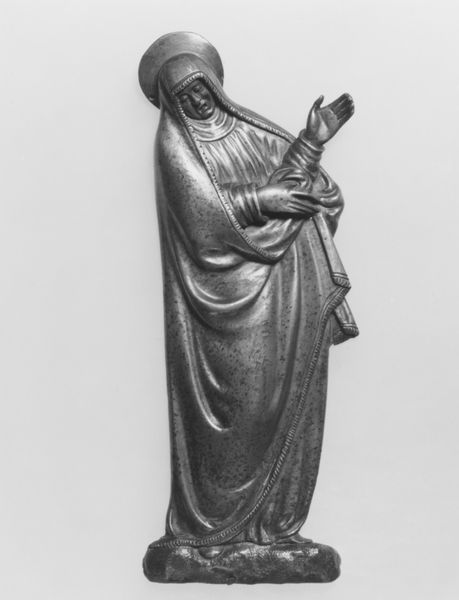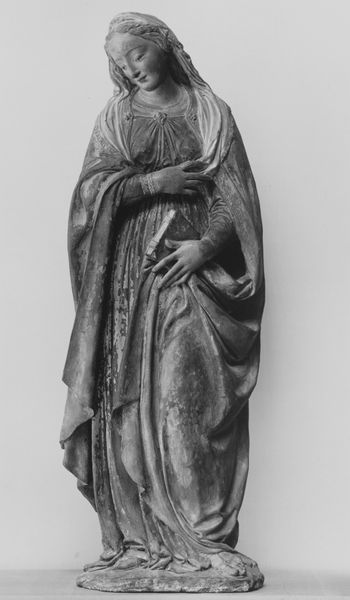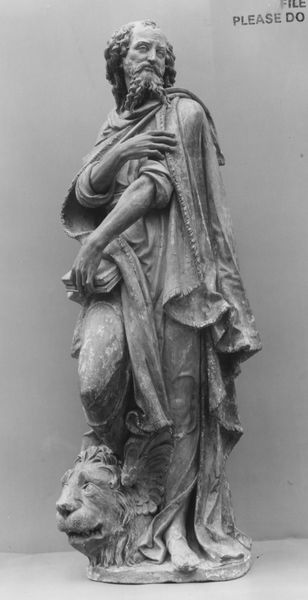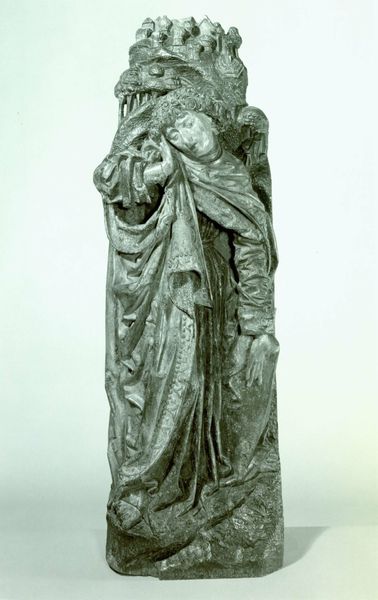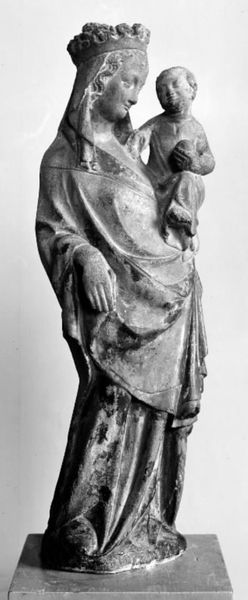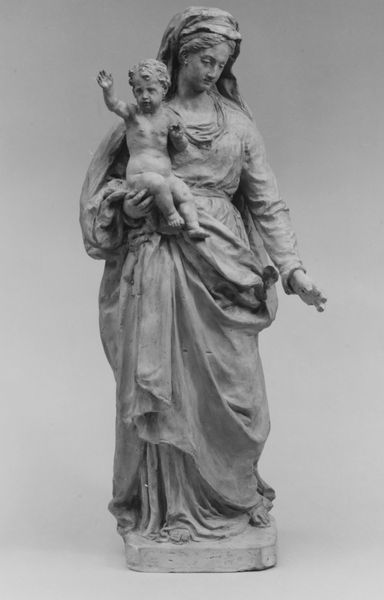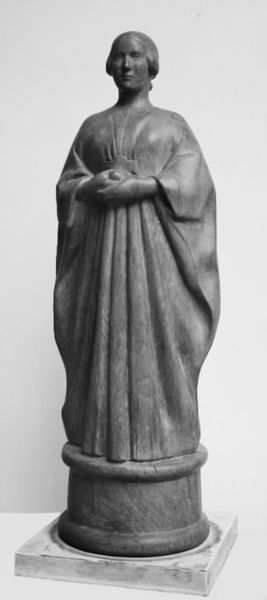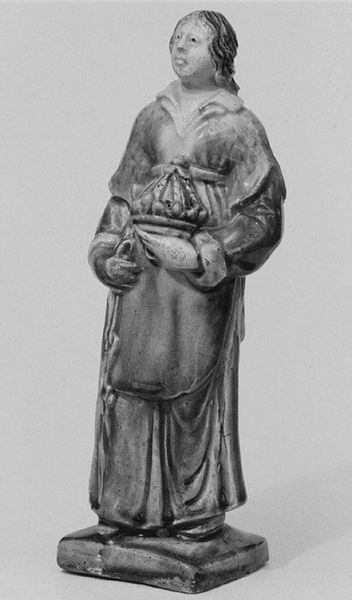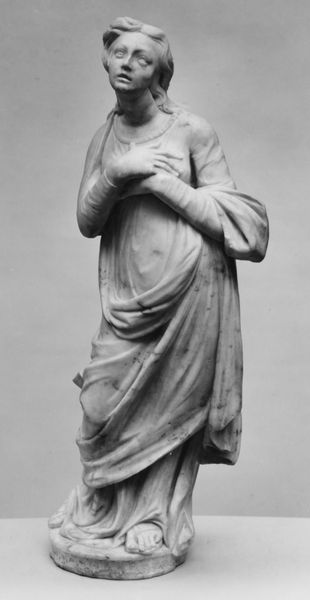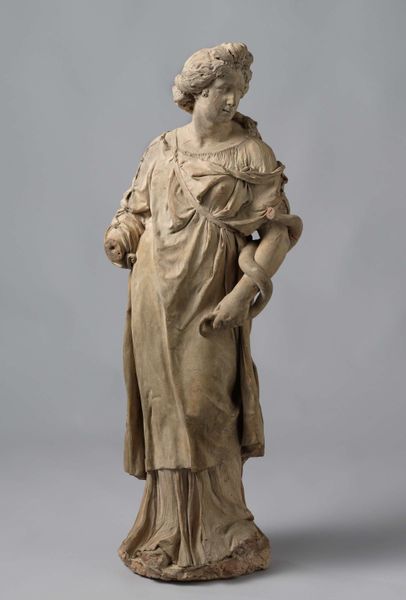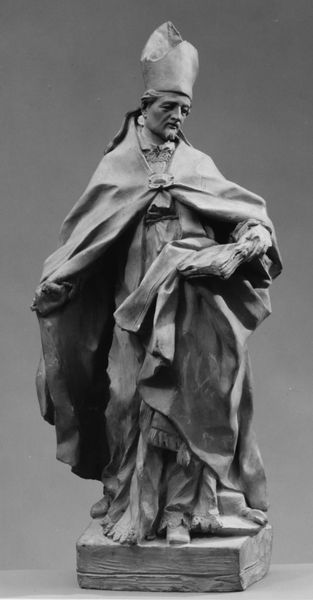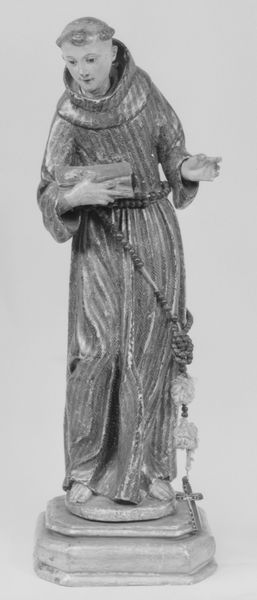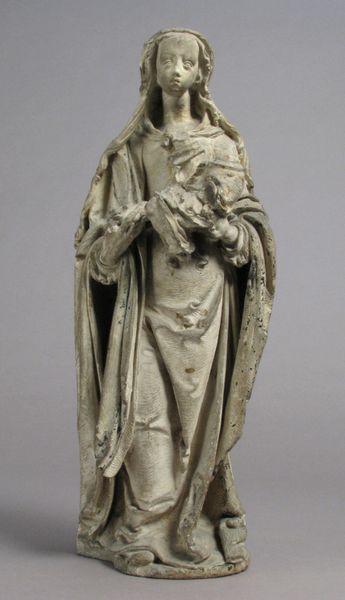
sculpture
#
baroque
#
sculpture
#
figuration
#
sculpture
#
decorative-art
Dimensions: H. 15-3/4 in. (40 cm.)
Copyright: Public Domain
Curator: So, here we have "Fortitude," a sculpture attributed to Angelo Piò, dating back to the mid-18th century, roughly 1740 to 1750. Editor: My first thought is...what a beautiful ghost! She’s spectral, a gentle warrior fading into the ether. The light softens her, makes her look almost like she’s made of mist. Curator: The baroque style really shines here. Piò sculpted her with dynamism and a powerful, albeit serene, presence. But let's consider the cultural context: this piece would have been viewed through the lens of classical ideals, blending ideas of strength and virtue, particularly for women. How do you see those intersectional ideas represented? Editor: Well, I think she represents a really fascinating push-pull. The shield and helmet represent this externalized power and defense, right? Yet her downcast gaze and flowing robes soften it—creating this internal struggle between traditional notions of feminine virtue and the strength she outwardly projects. It feels like a coded message, maybe a whispered rebellion against rigid expectations. Curator: Exactly! The use of allegorical figures like Fortitude was a common language for exploring societal norms. What I find so captivating about baroque art is its potential for subtle critiques woven into what may appear on the surface to be traditional symbolism. Piò, whether intentionally or not, offers us a Fortitude that isn’t just about battle, but also quiet defiance. Editor: I love that. There’s this tension between the heavy symbolism and the light, almost ethereal, treatment of the sculpture. It makes me think about all the things we consider "brave" and whether true strength always needs to be loud. Perhaps it's simply about enduring. Curator: In essence, isn't that the point? To look beyond the surface of these symbolic figures and question what they truly represent, for that time, but, more importantly, what they mean today? Editor: Totally! I keep looking at her hand resting on her cloak, that simple gesture says it all. So much is implied; power restrained, grace under fire…she contains multitudes. Curator: Yes. Ultimately, "Fortitude," frozen in time, invites a very contemporary dialogue.
Comments
No comments
Be the first to comment and join the conversation on the ultimate creative platform.
